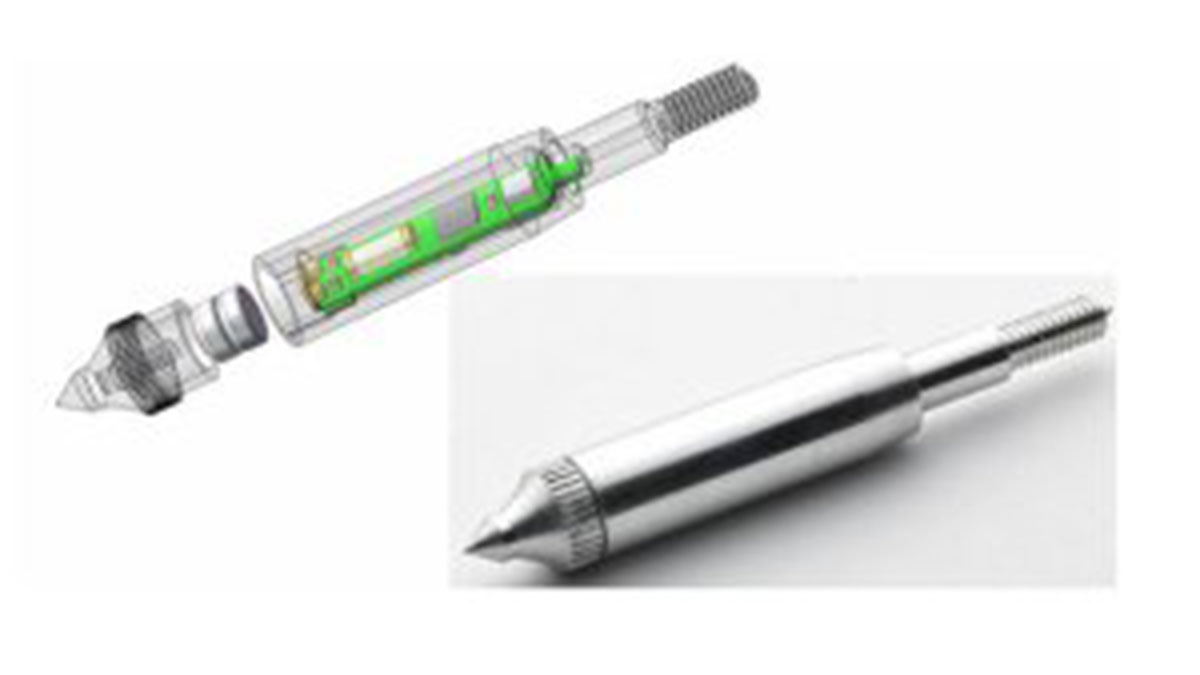The ADXL346 is a small, thin, ultralow power, 3-axis accelerometer with high resolution (13-bit) measurement at up to ±16 g. Digital output data is formatted as 16-bit twos complement and is accessible through either an SPI (3- or 4-wire) or I2C® digital interface.
The ADXL346 is well suited for mobile device applications. It measures the static acceleration of gravity in tilt-sensing applications, as well as dynamic acceleration resulting from motion or shock. Its high resolution (4 mg/LSB) enables measurement of inclination changes of less than 1.0°.
Several special sensing functions are provided. Activity and inactivity sensing detect the presence or lack of motion by comparing the acceleration on any axis with user-set thresholds. Tap sensing detects single and double taps in any direction. Free-fall sensing detects if the device is falling. Orientation detection is capable of concurrent four- and six-position sensing and a user-selectable interrupt on orientation change for 2D or 3D applications. These functions can be mapped individually to either of two interrupt output pins. An integrated, patent pending memory management system with 32-level first in, first out (FIFO) buffer can be used to store data to minimize host processor activity and lower overall system power consumption.
Low power modes enable intelligent motion-based power management with threshold sensing and active acceleration measurement at extremely low power dissipation.
The ADXL346 is supplied in a small, thin, 3 mm × 3 mm × 0.95 mm, 16-lead, plastic package.
FEATURES and BENEFITS
- Ultralow power: as low as 23 μA in measurement mode and 0.2 μA in standby mode at VS = 2.6 V (typical)
- Power consumption scales automatically with bandwidth
- User-selectable resolution
— Fixed 10-bit resolution
— Full resolution, where resolution increases with g range, up to 13-bit resolution at ±16 g (maintaining 4 mg/LSB scale factor in all g ranges) - Patent pending, embedded memory management system with FIFO technology minimizes host processor load
- Single tap/double tap detection
- Activity/inactivity monitoring
- Freefall detection
- Concurrent four- and six-position orientation detection
- Supply and I/O voltage range:
1.7 V to 2.75 V - SPI (3- and 4-wire) and I2C digital interfaces
- Flexible interrupt modes mappable to either interrupt pin
- See data sheet for additional features

Ballistics company Full Flight Technology has chosen a MEMS accelerometer from Analog Devices for instrumented arrows and crossbow bolts.
“The ADXL346 3-axis device accelerometer was selected for use in the company’s Velocitip Ballistic System, which is the first ever to use an arrow-mounted device to provide information about arrow speed, flight dynamics and bow performance,” said ADI.
As well as the arrow tip, the system has a battery pack, docking station, USB cable and PC software.
It continuously measures arrow drag in flight to provide performance data without needing equipment along the flight route. The archer simply screws the instrumented tip on instead of the standard tip and shoots at the target.
“This is without a doubt the most sophisticated microelectronics technology ever applied to the field of archery,” said Full Flight founder Bob Donahoe. “The accelerometer is an essential enabling technology for system thanks to its ability to survive repeated hi-g shock, its small package, and low power.”
For more read: Smart arrow uses ADI MEMS sensor
